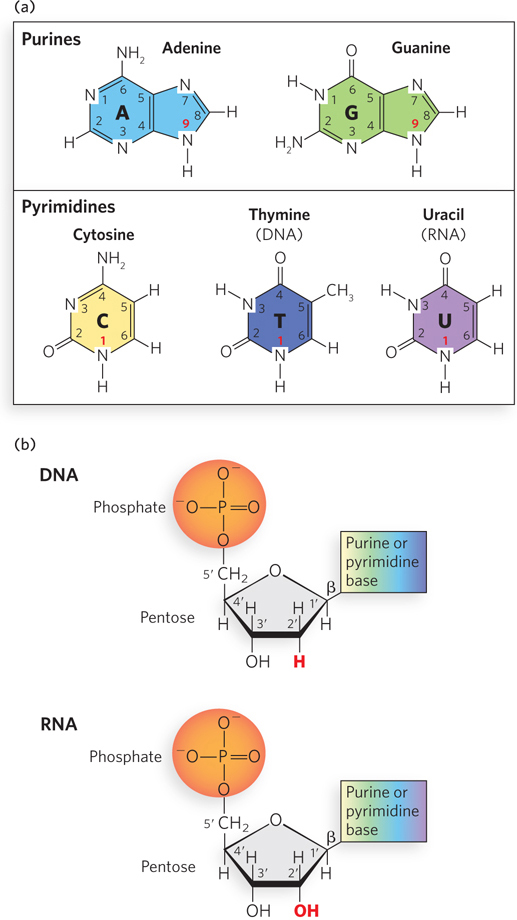
The chemical composition of nucleotides. (a) The bases are purines, with nine- x- N- N-